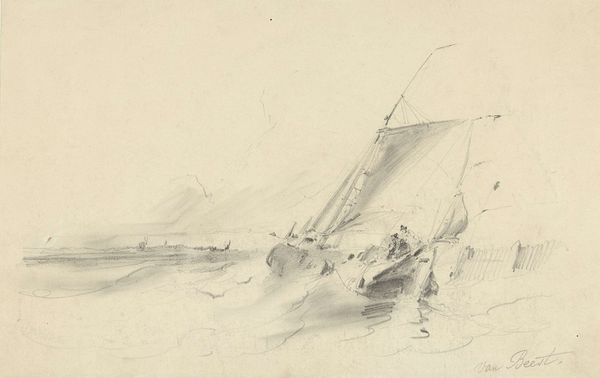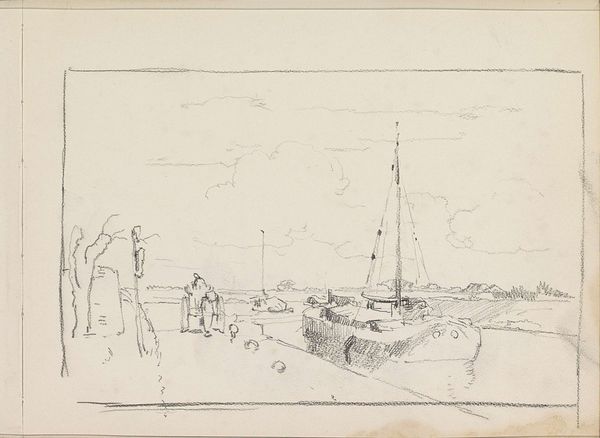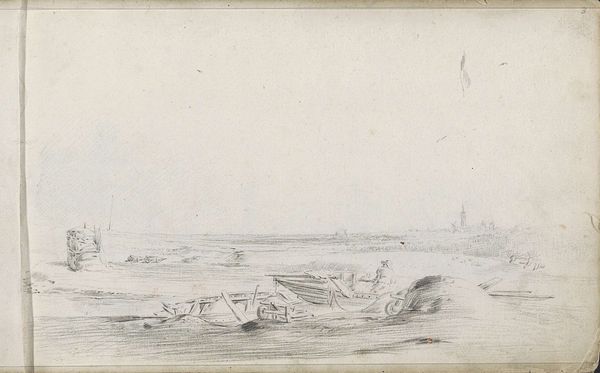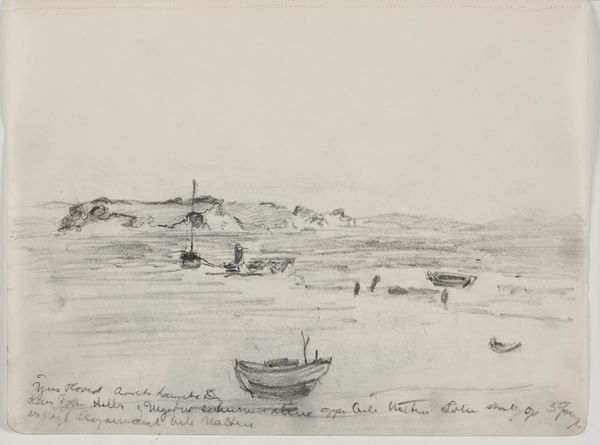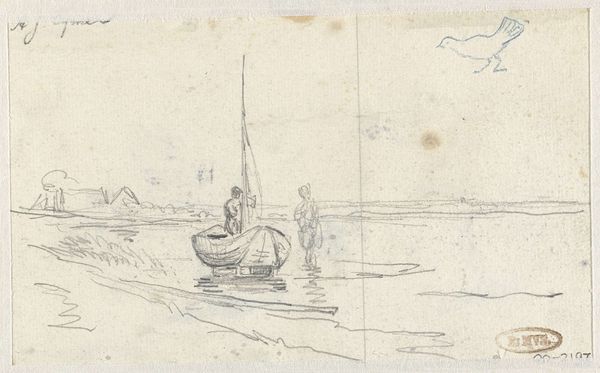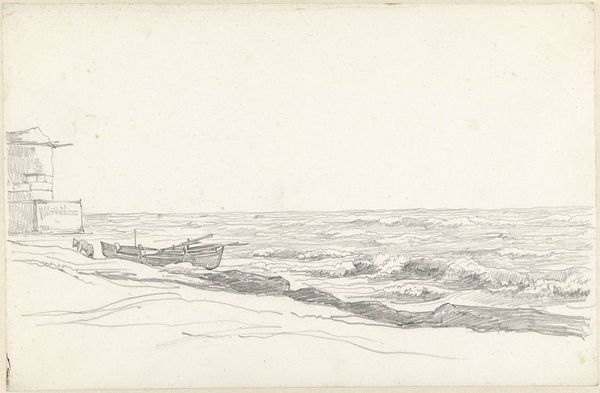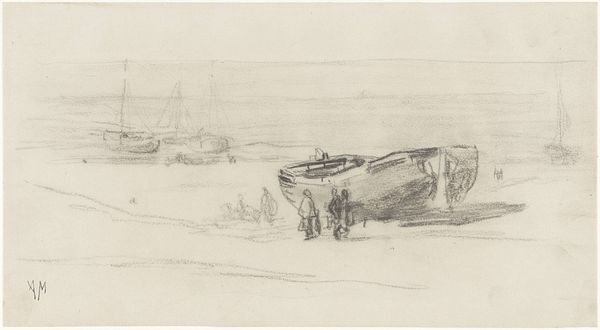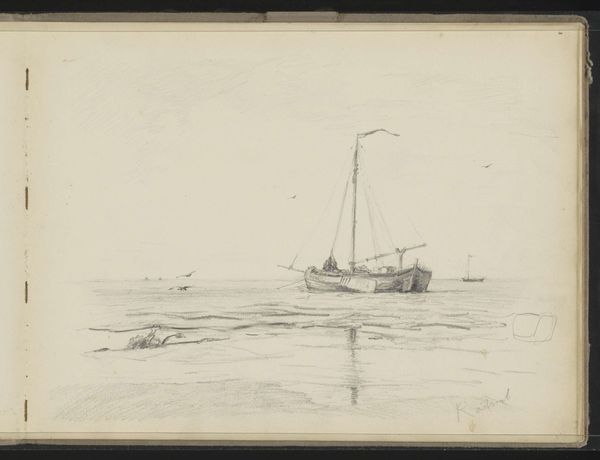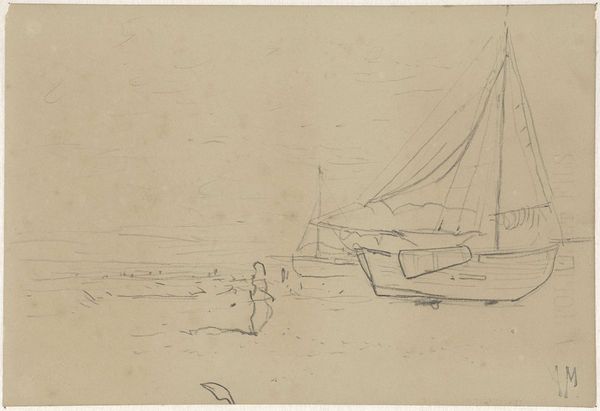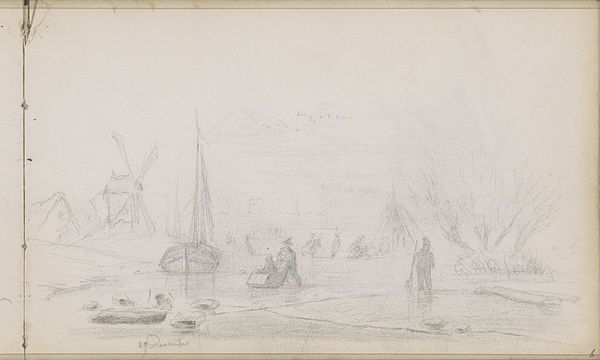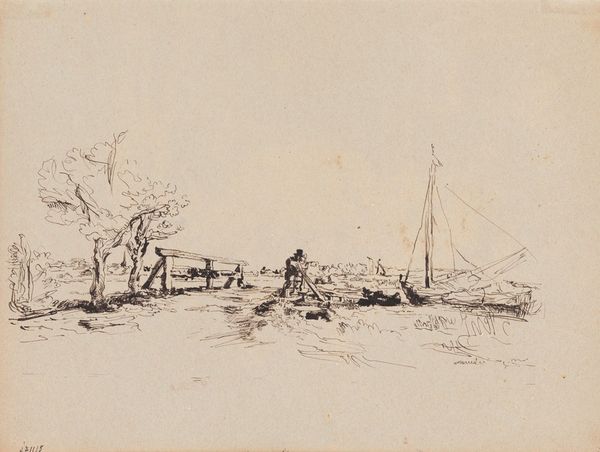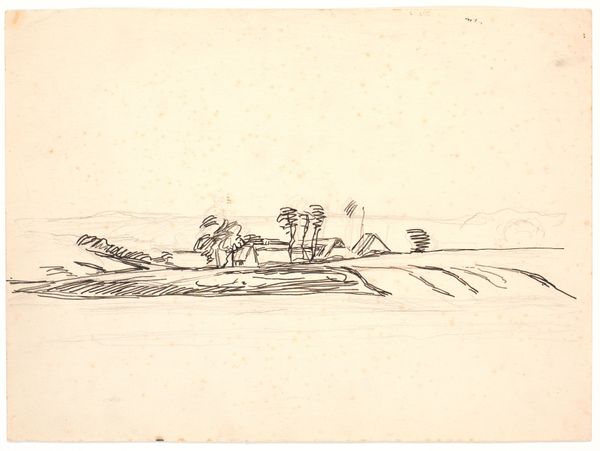
drawing, paper, pencil
#
drawing
#
pencil sketch
#
landscape
#
paper
#
pencil
#
realism
Copyright: Rijks Museum: Open Domain
Editor: This is "Figures by Two Fishing Boats on the Beach," a pencil drawing on paper by Johannes Bosboom, around 1873, residing here at the Rijksmuseum. There’s a hazy quality to it that feels almost dreamlike. I'm curious, what stands out to you in this seemingly simple sketch? Curator: Well, beyond its representational function, let's consider the *process* of its creation. Bosboom chose pencil – a readily available, relatively inexpensive material. What does that choice signify? Is it a democratic gesture, making art accessible, or is it merely practical? Think about the labor involved in fishing itself, reflected here by portraying these boats. Editor: I see what you mean, it’s not about the glorification of the boats, but about the…toil around them. Does the sketchiness speak to a quickness of production, documenting something immediate and fleeting? Curator: Exactly. Consider the paper itself - its very substance hints at the industrial production and consumption inherent in art creation. This is not rarefied oil on canvas. This is paper, pencil – elements touched by countless hands before Bosboom. Editor: That reframes it entirely! The “humble” materials aren’t so humble when you think about their wider production. Curator: Indeed. And this challenges the traditional separation of "high art" from the processes of material culture. How can a "simple" sketch reflect larger economies? What do you think it says about Bosboom's intentions by choosing these materials for what is, presumably, a finished piece for presentation rather than just a preparatory sketch? Editor: Perhaps a social commentary…showing a less romanticized view of working life through "everyday" production? The focus seems shifted to capturing work and life by the sea. Curator: Precisely! Bosboom emphasizes the relationship between people, the materiality of work, and the means to represent it. We learn much about art in the making. Editor: Fascinating! I wouldn't have considered the socio-economic implications of the materials. This changes how I will approach the artist's intentions!
Comments
No comments
Be the first to comment and join the conversation on the ultimate creative platform.
